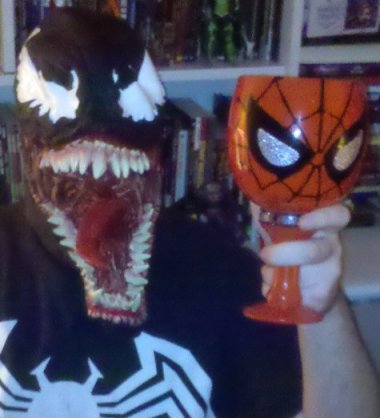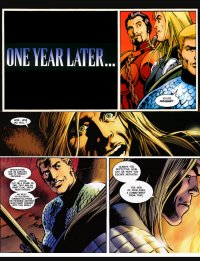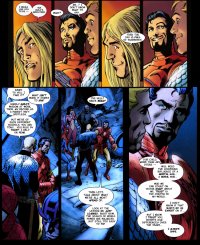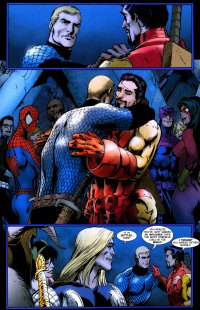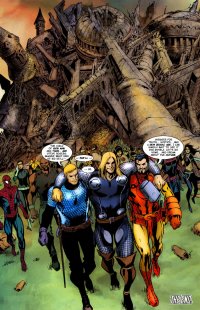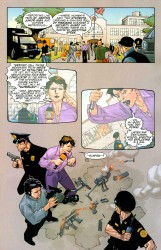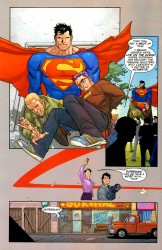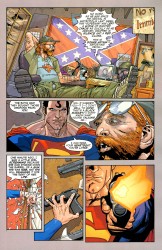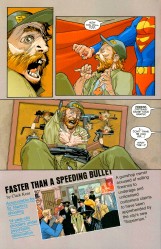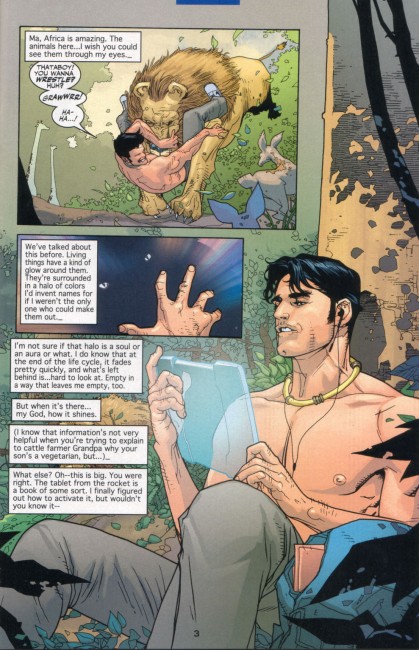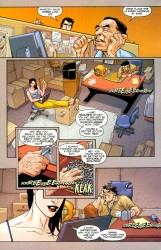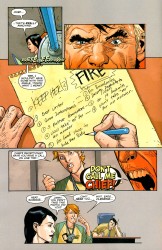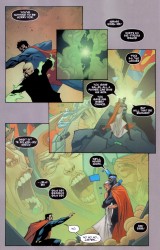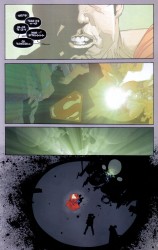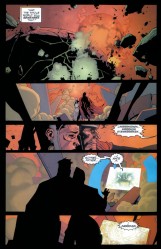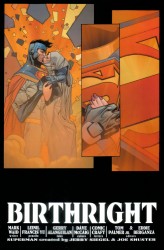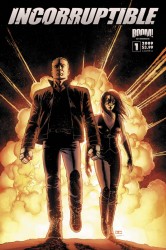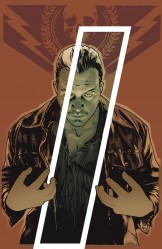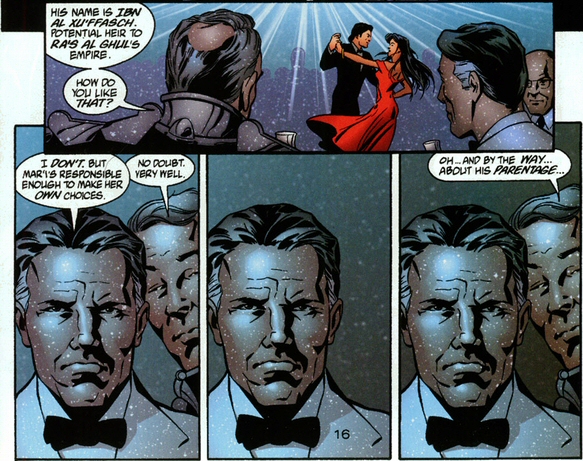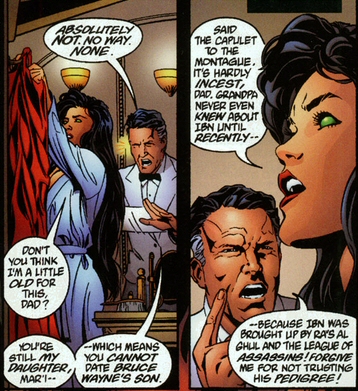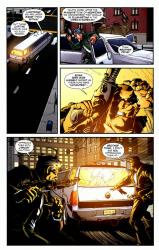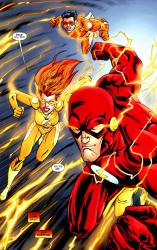
that’s a one hot team every ten issues average
February 24th, 2012 Posted by david brothersMarvel’s been double-shipping comics lately, taking advantage of an increased shipping schedule to pull a little more money from their fanbase. As a result… the quality and consistency of their books has slipped over. Here’s a quick copy/paste from my buddy Ron Richards’s Marvel May solicitations post that does a pretty good job of explaining the situation:
To put it in perspective, here’s a rundown of several single issues coming out in May. Series that previously featured a “hot” artist who received critical and fan praise, and the artist replacing them:
Secret Avengers #27 – you loved Gabe Hardman on this book that JUST relaunched with a new creative team, so HERE’S RENATO GUEDES!
Ultimate Spider-Man #10 – you loved Sara Pichelli and her new take on Ultimate Spider-Man, so HERE’S DAVID MARQUEZ!
Ultimate Comics The Ultimates #10 and #11 – Esad Ribic blew your minds with the opening chapters of Hickman’s run, so HERE’S LUKE ROSS!
Scarlet Spider #5 – you loved Ryan Stegman after he launched this title, so HERE’S NEIL EDWARDS!
Fantastic Four #605.1 – you loved Steve Epting, so HERE’S MIKE CHOI (Speaks for itself after last week’s Green Lantern #6 atrocity)!
Defenders #6 – you loved Terry Dodson, so HERE’S VICTOR IBANEZ!
Daredevil #12 – you loved Paolo Rivera SO HERE’S CHRIS SAMNEE – oh wait, this is a good one…
EXCEPT, next issue…
Daredevil #13 – you loved Paolo Rivera and Chris Samnee, so HERE’S KHOI PHAM!
Don’t mind me, my head’s too busy spinning.
That’s a lot of changes. Most mainstream artists can just about keep a monthly schedule. Previously, you’d see two stable art teams alternating arcs on a book to keep the book on schedule and with something of a cohesive look. With the double-shipping, stable art teams are looking less and less likely.
Daredevil is a good example of what I’m talking about, and why these art changes are so frustrating. At launch, it was announced as a book that would feature Mark Waid writing with Paolo Rivera (and his pop Joe Rivera inking him!) and Marcos Martin alternating on art duties. Javier Rodriguez was going to color Rivera, Muntsa Vicente was going to color Martin, and Joe Caramagna was going to letter all of it. That’s a good team–an astounding one, honestly. Alone, Rivera and Martin are beasts. Putting them on the same book is like having putting on a concert with fifteen Michael Jacksons on stage at once, or going to a basketball game that’s Jordan on Jordan. (It’s a pretty good comic.)
By the time we hit issue 13, we’ll have seen Rivera, Martin, Kano, Chris Samnee, and Khoi Pham illustrating the book. That’s five artists over thirteen issues. Some will have done one issue, others just a few. And on a certain level, sure, all of these artists are pretty good. Daredevil is going to be a good looking comic regardless, and will presumably remain well-written. But on another level, good looking isn’t a binary proposition. Martin’s good looking is different from Rivera’s good looking. Samnee and Kano are two entirely different types of good looking. With alternating teams of two, you can maintain a real visual identity. That’s what a stable art team does–it gives the book a look. Bringing in five artists onto a book in just over a year is far from stability. It’s another hoop for your suspension of disbelief to jump through so you believe in the story.
I saw a Marvel editor going off on Twitter about how artist switch-ups aren’t a problem, because hey, you’re still buying the comic, aren’t you? What’s the deal? It’s not like they’re ugly. I disagree. Vehemently disagree, in fact.
Think of it like this. When you hopped on Daredevil, you hopped on for Waid, Rivera, and Martin. They set a specific mood with their first issue. For another artist to tag in, even a good one, muddies that mood. Samnee doesn’t draw like Kano, who doesn’t draw like Martin, who doesn’t draw like Rivera. Rivera and Martin are complementary (though perhaps not as complementary as Javier Pulido and Marcos Martin, another killer duo), and their mood (which is aided and abetted by Waid’s script, of course) is a very specific thing.
When you begin adding to that mood, Daredevil becomes a different comic. It’s like if the actors changed forty-five minutes into a film, or if the new hot single by your favorite artist changed BPM and singers halfway through, but kept the same subject matter. It’s not that strange a comparison, I don’t think. There’s a skipped beat there. Every artist is unique, and swapping an artist out of one story (and make no mistake, Waid is clearly scripting one story) and slotting another in changes that story fundamentally.
I’m actually having a hard time explaining why because it’s so obvious and basic to me. It looks different, and comics are a visual medium. You don’t just read comics–you look at them. The art matters, and when the art changes, the story changes. All-Star Batman and Robin the Boy Wonder is such a beautiful hot mess because Jim Lee is the quintessential superhero artist of our day and Frank Miller scripted a story that needed a more cartoony, flexible style. I talk about it here a little, but Lee is simultaneously the best and worst choice to illustrate what Miller was trying to do. If Miller drew ASBAR, it would have been received differently. It follows, then, that Lee’s ASBAR is not Miller’s, just like Rivera’s Daredevil is not Kano’s. It isn’t a value judgment. It’s an objective fact. Blue is not red, but they are both nice colors. Same thing.
These changes also have this unwanted effect of devaluing the artist, in a way. It sets the writer up as the prime mover on a comic book. The writer is the one constant in all these creative changes, and that changes the conversation from “Waid and Rivera are doing Daredevil!” to “Rivera is drawing Waid’s Daredevil next issue!” There is a difference there, and it affects how we think and talk about comics. It gives the writer ownership of the book, and makes the artist secondary, despite the artist being such a huge part of the success of the book.
(I realize that I’m giving short shrift to the inkers, colorists, and letterers here, but please believe that I love you guys, and do not wish to underestimate your influence. Pardon my shorthand.)
I don’t expect every creative team to stay together forever. But the constant musical chairs, right when things are getting good, is off-putting. We’re paying more money for less content, and we can’t even get consistent content. I understand why Marvel double ships comics, but am I really going to keep buying two issues a month when the creative team is compromised like it is on so many books in the latest round of solicits?
I buy cape comics because I like seeing what a small, dedicated team can do with these old characters I grew up on. Spider-Man has no value in and of himself. I might get curious about a series featuring Spider-Man and Hypno Hustler, but without a strong creative team, it’s nothing. It’s worse than nothing. Uncanny X-Force is a dumb idea on paper. It’s the team of X-Men that go out and murder people at night. But it came roaring out of the gates with Rick Remender, Jerome Opeña, and Dean White firing on all cylinders, including cylinders I didn’t even know Marvel had. That team made that series. By issue eight, Billy Tan was drawing the book, the quality took a nosedive, the magic was broken, and I bailed out. Why was Tan drawing it? Because Marvel shipped six issues of the series between the cover dates of May 2011 and July 2011, tossed out another two in October, and will consistently double-ship the book from February to April.
Uncanny X-Force 17-22 feature five different artists. That’s seven issues, including 19.1. There’s no in-story reason for the double-shipping. It just happens. That’s not a problem? It’s enough of a problem that I quit the series, and I’m absolutely positive that I’m not the only one. Maybe it’s just us elitist hipster douchebags dropping books over changes, but I doubt it.
Boiled down, though, my only request is this. If you want us to pay four bucks for 20 pages of comics, then at least let us trust that the reasons we’re reading the series are going to stick around. Let us get a story from a creative team that’s had time to grow together and get in sync. If you want us to pay more for less, at least do us the basic favor of giving us something approaching consistency.

